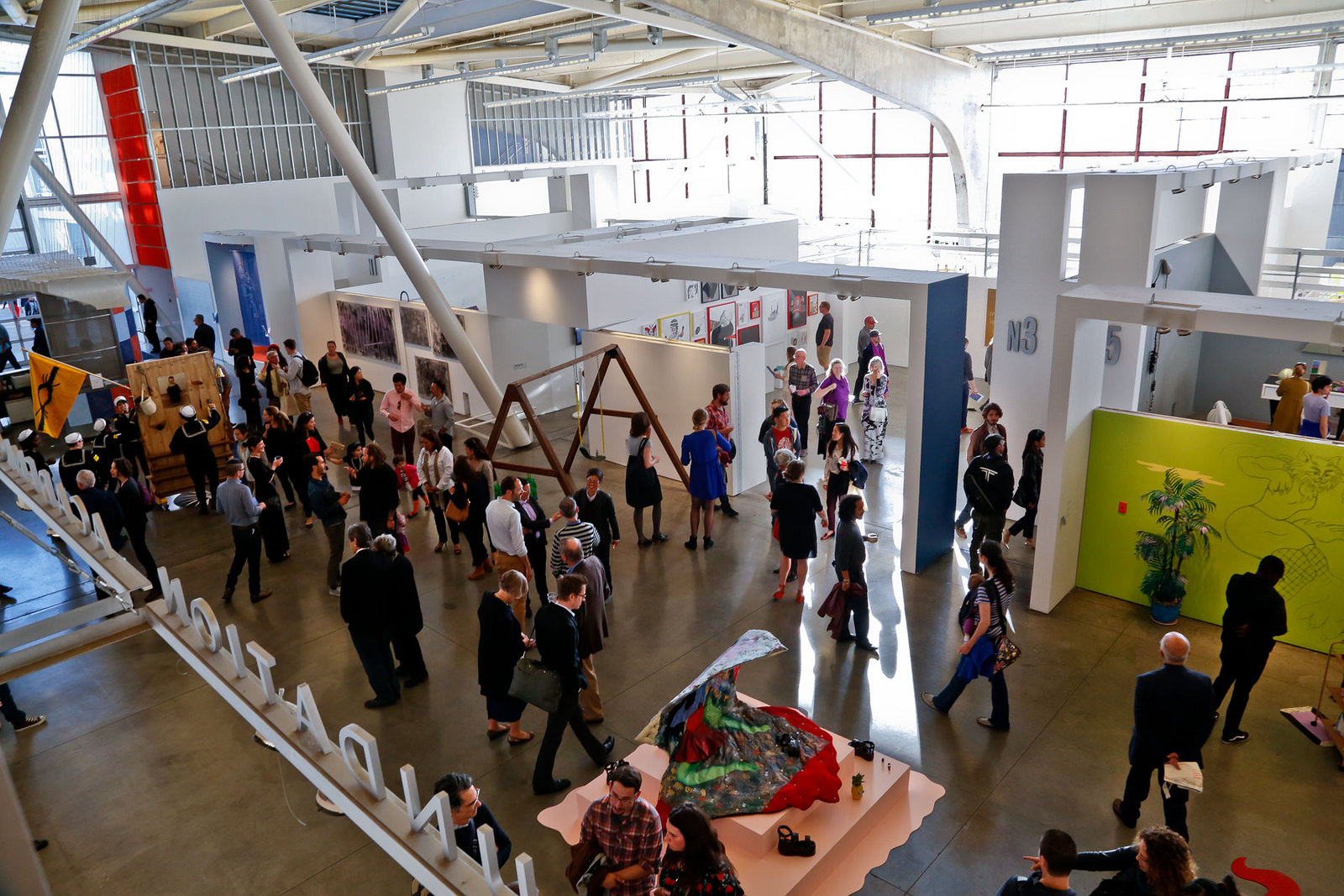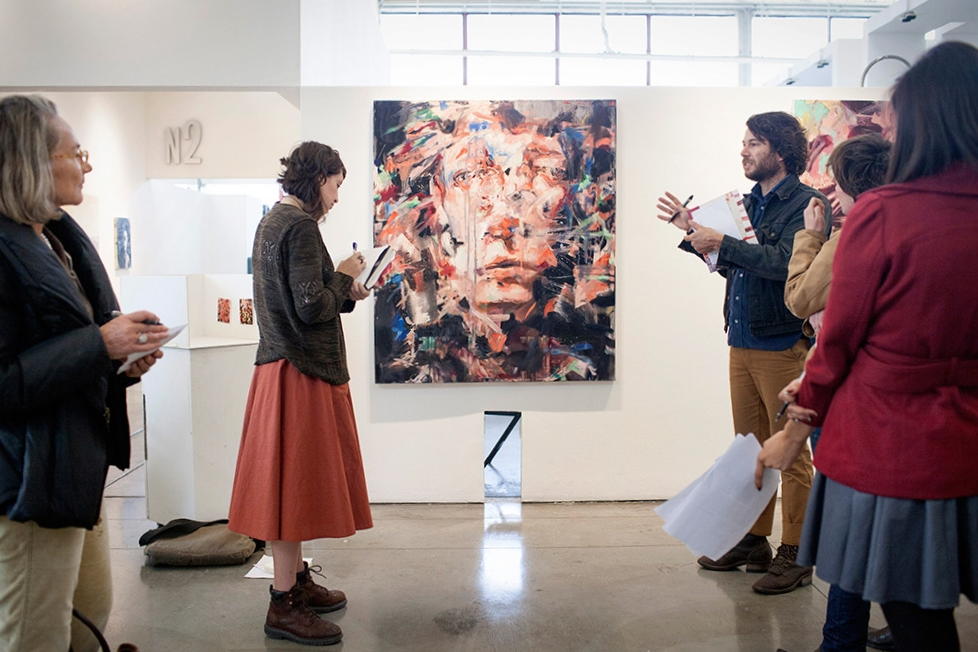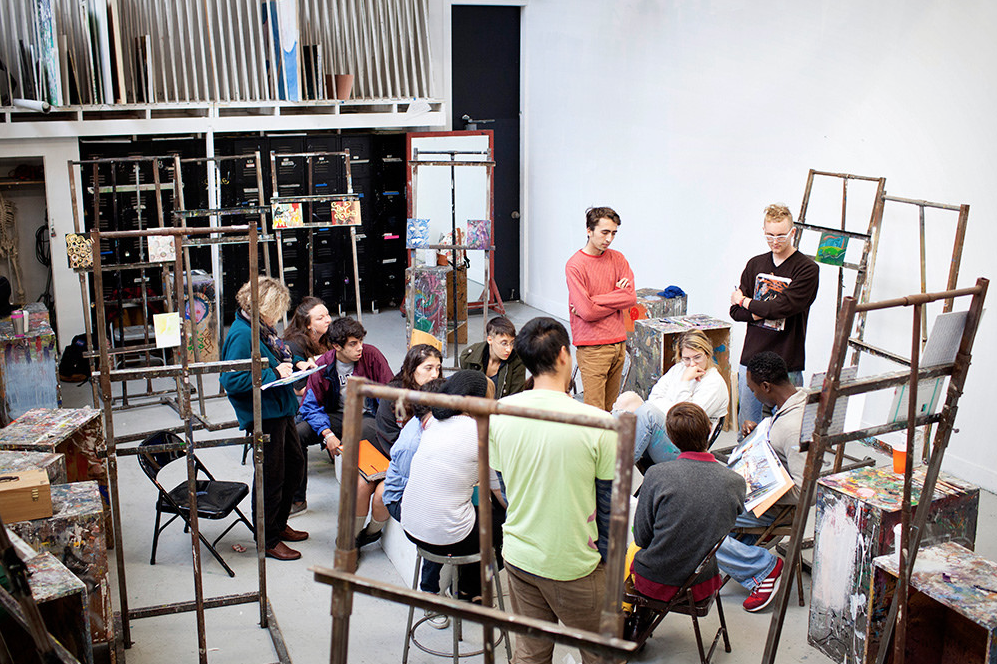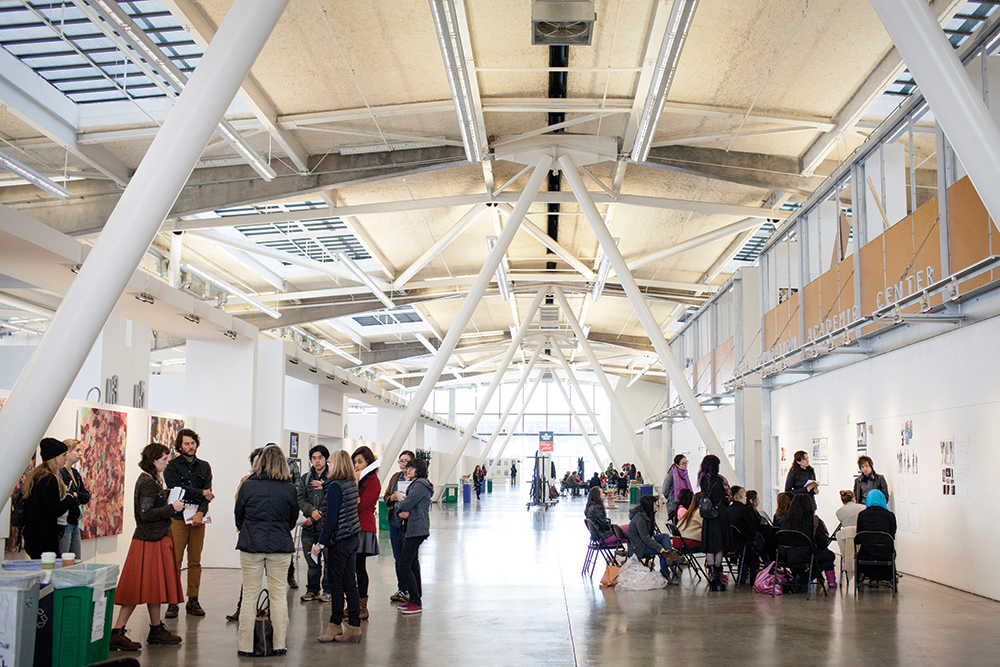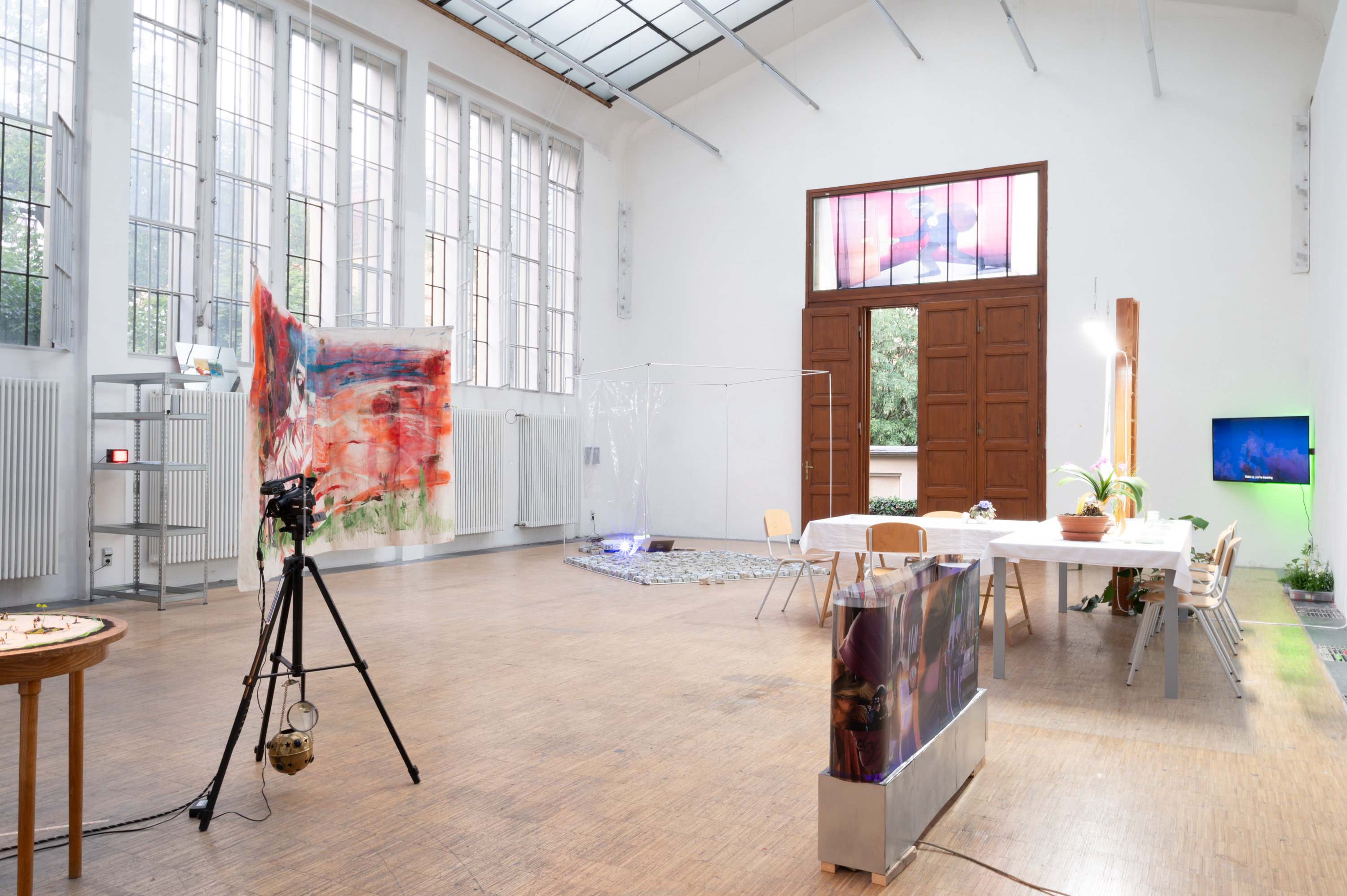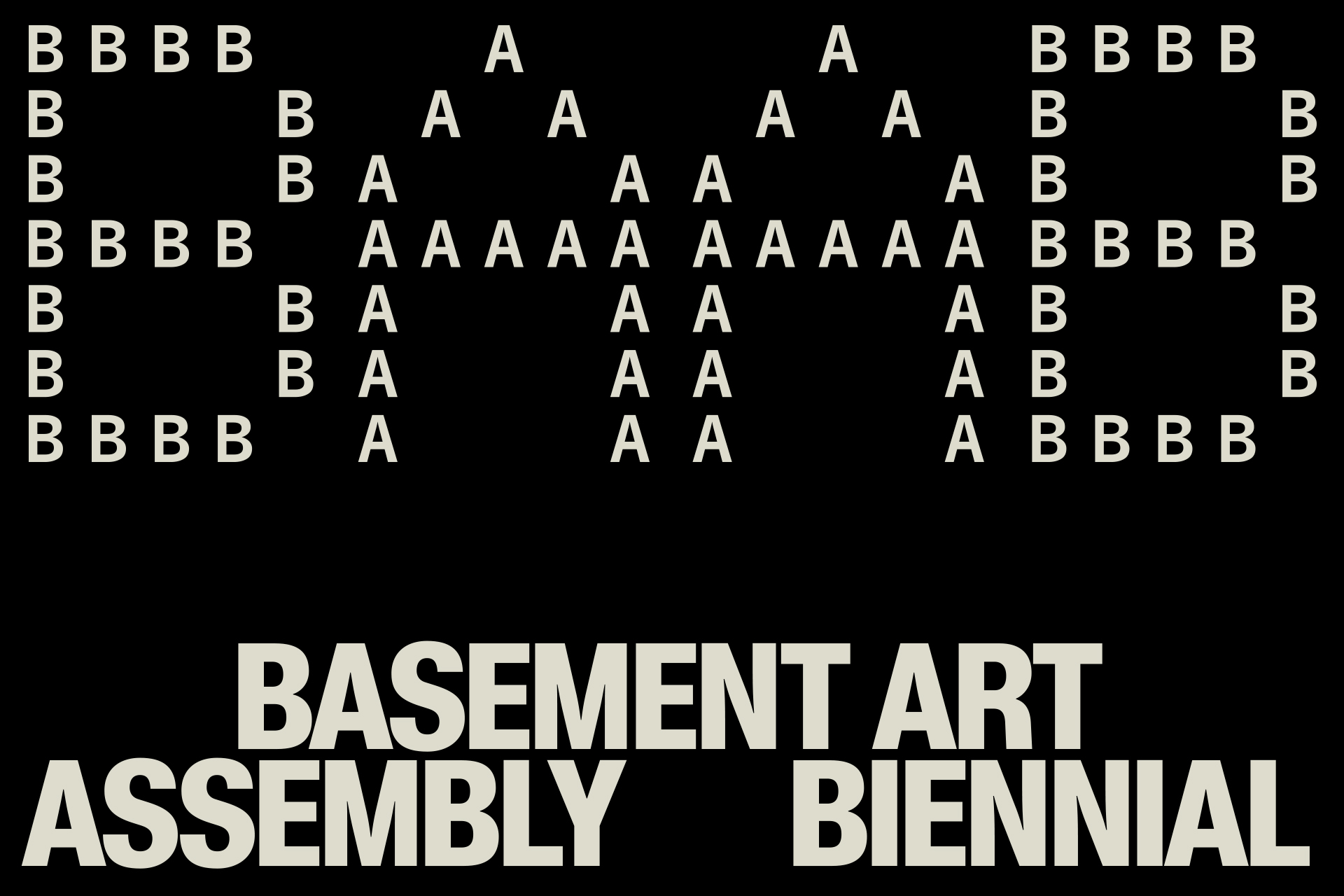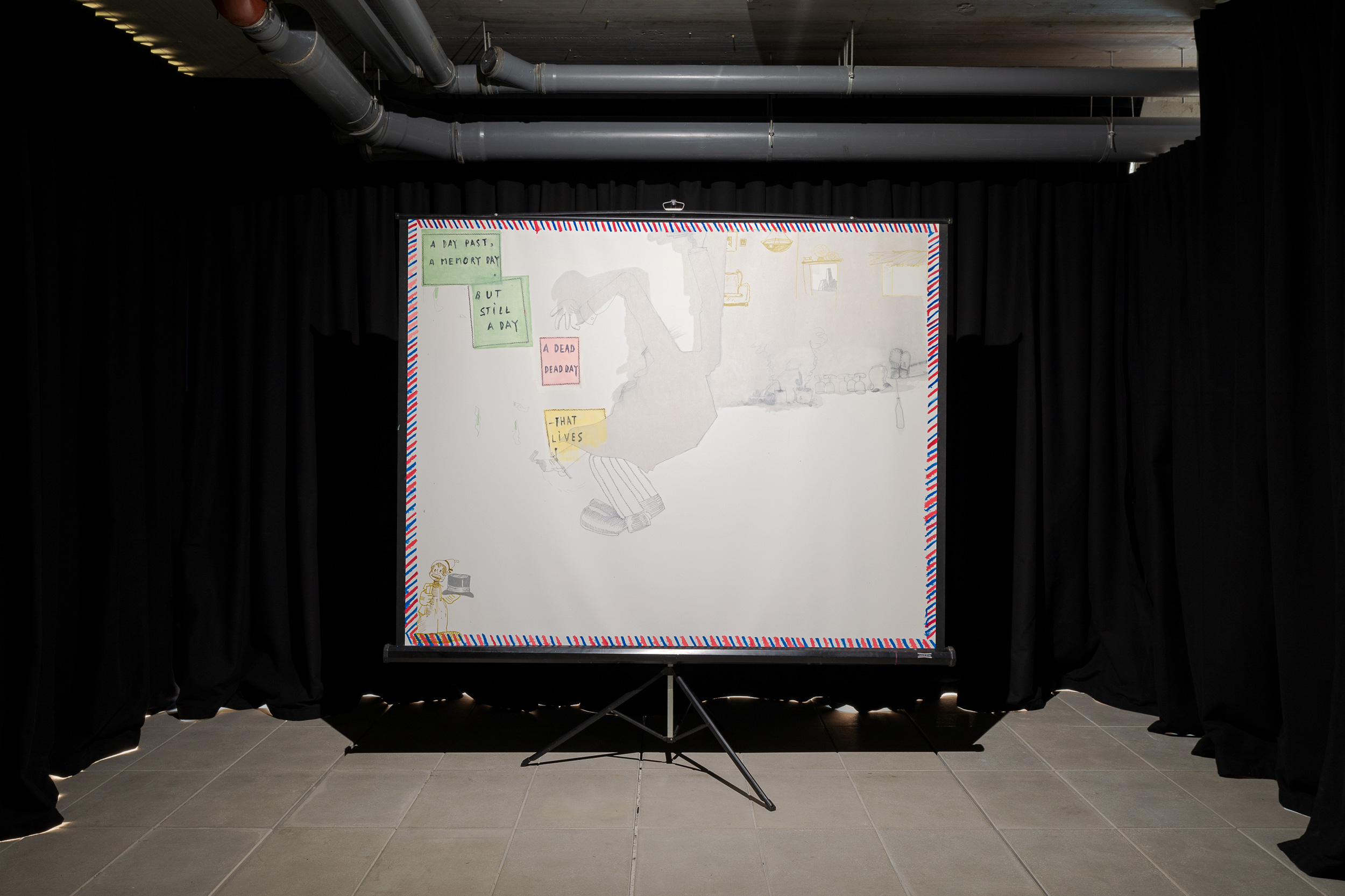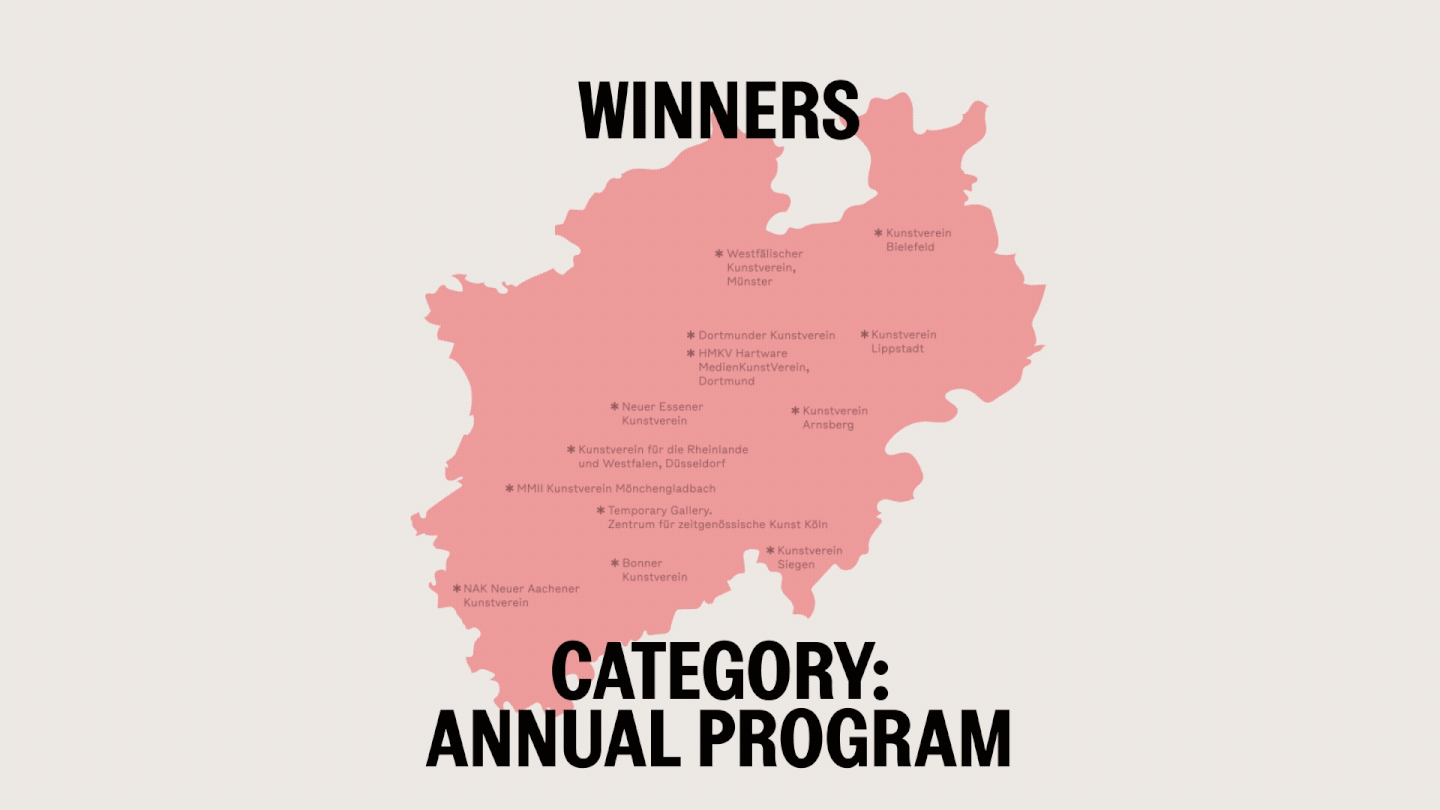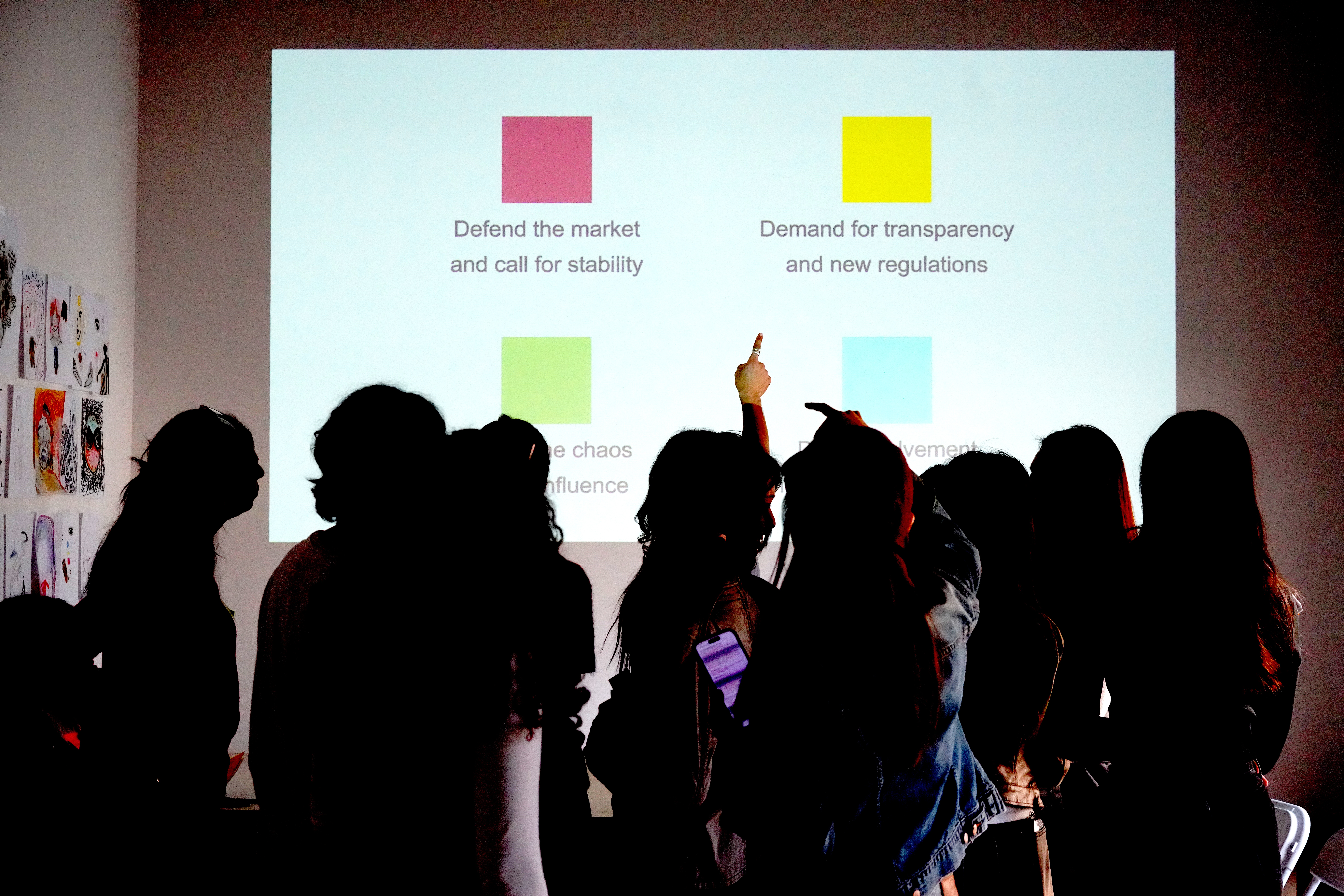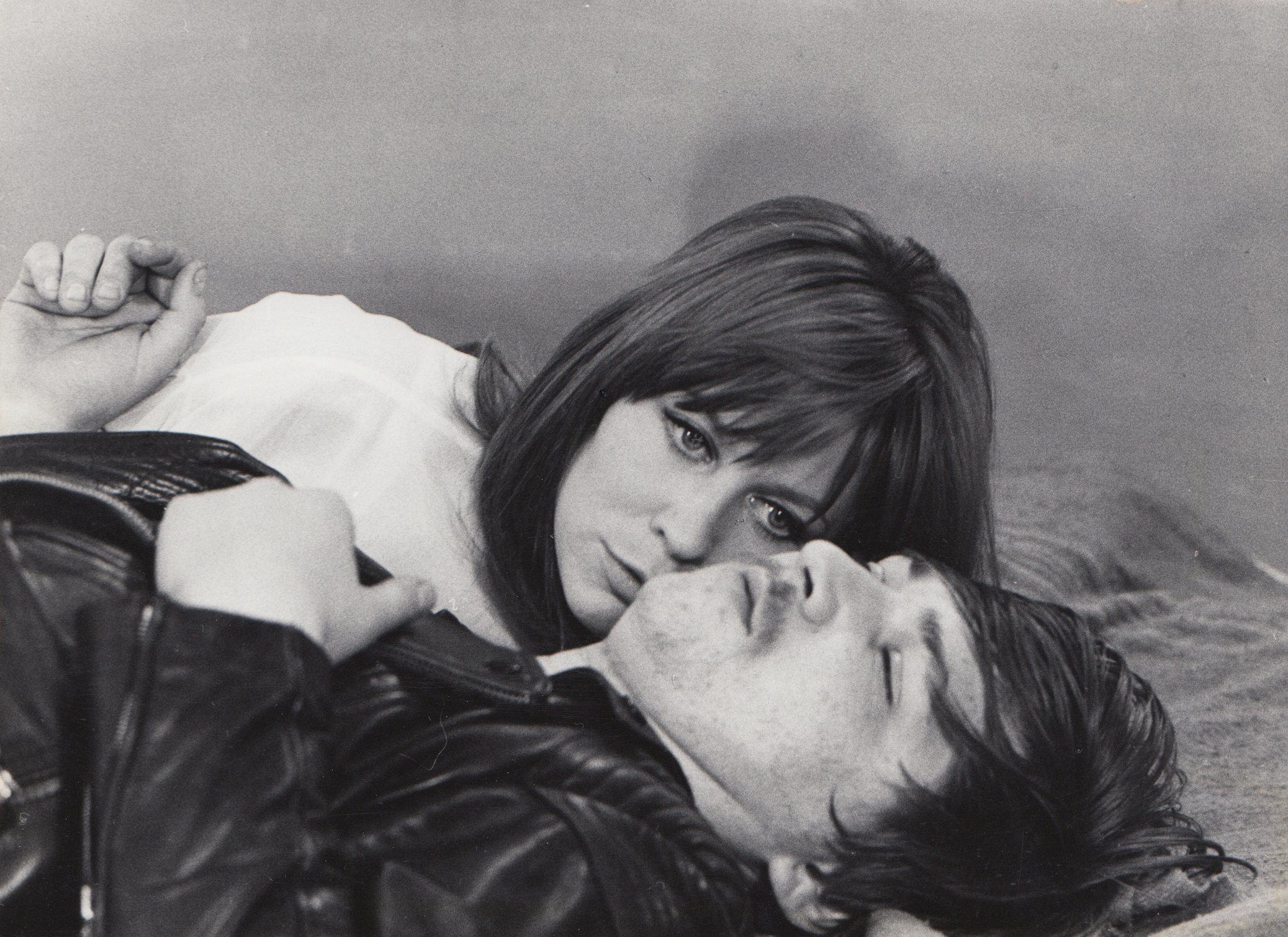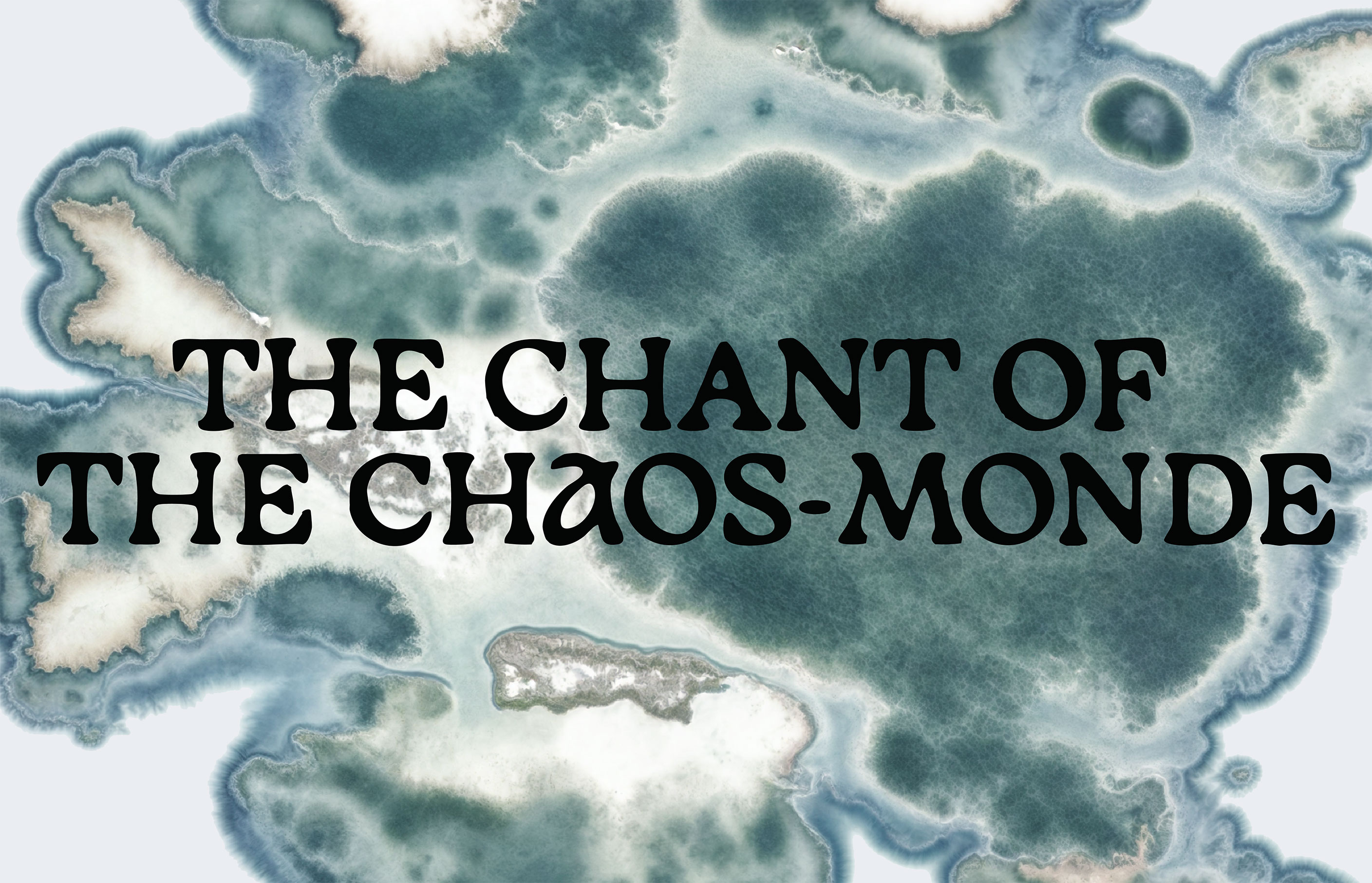One bright September afternoon in the Potrero Hill neighborhood of San Francisco, I found myself sitting at an orange picnic table on a vacant lot the size of several football fields. It might be one of the most valuable empty lots in the United States. Located just below the South of Market neighborhood, the ground zero of tech, and directly facing game company Zynga, half a dozen other startups, and a fresh row of luxury condos that seemed to pop up overnight like mushrooms in the gentrifying neighborhood, it’s hard to sit at one of these picnic tables and not feel that California College of the Arts (CCA) is sitting on a vast topography of pure potential, both economic and aesthetic.
It’s also hard not to read this lot as a metaphor for CCA as an institution: the school has been described over and over—by faculty, alumni, students, and staff—as nimble, flexible, and responsive, with massive room to grow. Leaving the lot, I reenter the main building of the San Francisco campus (the smaller Oakland campus houses the program and residence halls for first-year students). The 120,000-square-foot main building resembles an airplane hangar, with modular walls covered with ever-changing projects; the first day I visit, it’s full of architectural designs and models, and a few weeks later it’s completely reconfigured, with small clusters of student crits here and there.
CCA is the only art school that will soon be offering a stand-alone one-year master’s degree in social practice, as well as the only independent MBA program (i.e., not a joint program associated with a business school) at an art school. These two facts are at the center of CCA’s perceived nimble and flexible responsiveness. The two-year Design Strategy program (DMBA) prepares students for both “creative” industries and traditional business environments, with dedicated studio space and training in leadership and entrepreneurship. In addition, CCA has long been a forerunner in social practice, offering it as a focus within the MFA program. The school now extends and elevates this tradition with its new independent, twelve-month MA in Social Practice & Public Forms, which will be offered beginning in the fall of 2016.
These two programs are utterly in line with CCA’s history and mission—and, it must be said, very San Francisco in their commitment to both entrepreneurial innovation and activism. For provost Melanie Corn, “CCA should be the school where students learn a creative practice that will give them opportunities to become active citizens … There is no better time to be going to an art and design school; we are at a moment when creative practitioners have an opportunity to play an important role in making a huge impact in solving the world’s problems.” Indeed, what distinguishes CCA from other art schools is the availability of authentic community partnerships. There is a range of programs and resources that allow and encourage art students to partner with community organizations: the ENGAGE program offers project-based learning within a community engagement model; the Center for Art and Public Life is a strategic partnerships program with a focus on nonprofits; and there are work-study programs, fully funded by CCA, that match students with small nonprofits that couldn’t otherwise afford interns. Alumna Zarouhie Abdalian, speaking of her experience with the Center for Art and Public Life, described the paid internship that the center matched her up with at Creativity Explored (CE), a studio for artists with developmental disabilities: “Through CE, the Center for Art and Public Life introduced me to an exciting artist community that is beyond CCA’s campus, but is in the same neighborhood. Working at CE was important to my artistic development and a perfect complement to my graduate education: importantly, the devotion to and trust of one’s creative process exemplified by many of the artists at CE was an amazing model for me.” Experiences like these can extend into the job market as well. Corn’s conviction that there “doesn’t have to be an either/or opposition between capitalizing on economic value versus social value” is evident in the fact that CCA was rated as the top art and design school in the United States for salary potential.
The longer institutional history of CCA is a hundred-plus-year story of social engagement. Founded by Arts and Crafts movement leader Frederick Meyer in 1907 (originally named the School of the California Guild of Arts and Crafts), the school has been deeply invested in the relationship between the artist and society, “unlike other schools that come out of a more atelier or conservatory model,” Corn explains. “Social impact” and “theory and practice” are two phrases I heard more than any other during my visits to CCA. Ted Purves, who founded the social practice program at CCA in 2005 (at that time the first such program in the country) and who will lead the MA program next year, situates the school’s trajectory within a larger history of San Francisco: “[The city’s] intense history of activism and social experimentation, from Haight-Ashbury in the Sixties to queer mobilization in the Seventies, to combinations of dance, music, body art and robotics in the Eighties” means that San Francisco “has had both political and social conscientiousness embedded into its arts and culture scene for decades.” All of this, Purves argues, is reflected by the deep commitment to trans-disciplinary experimentation within the institution.
Suffice it to say that the MFA program at CCA is deeply integrated with other departments, sharing art history and theory courses with social practice as well as the MA in Curatorial Studies, which has recently been moved from the Humanities & Science department into the Fine Arts division. Leigh Markopoulos, chair of the Curatorial Practice program, has worked to make sure that the curatorial students and MFA students take foundational classes together. For Markopoulos, “curatorial practice [students] could spend all the time in the world talking about Bruce Nauman and Doug Aitkin, but it is much more exciting if they are doing their first writing on someone working on their first exhibition, working together with a fine art student who is figuring out the art world themselves.”
Against this backdrop, studio visits are a top priority; at least a third of the curriculum in the program occurs via one-on-one visits with faculty—which speaks to the MFAs overall devotion to teaching, reflected also in its commitment to tenured faculty positions. The importance given to studio visits are part of CCA’s concerted efforts to maintain a balance between theory and practice. Dean of Fine Arts Tammy Rae Carland explains: “We have paid a lot of rigorous attention to the balance of these, which includes not being overly theoretical or overly mired in theoretical discourse. The real emphasis in the MFA is on the studio.” This focus on the studio is counterbalanced by a very structured curriculum, with required art and theory classes taken alongside a “Dialogues & Practices” seminar that focuses on research and technique.
The word “nimble” comes up again when talking with James Gobel, who is currently the co-chair of the MFA with Ted Purves, and who will be the solo chair next fall. For Gobel, what characterizes the MFA program is its interdisciplinarity and its “shared” as opposed to “discipline-specific” conversation, which itself shifts based on student interest. “One of the things we do is adapt and respond,” Gobel explains, citing the small, ever-changing, topical “studio research lab” classes that are based on ideas that students find compelling and exciting. “We have the ability to take the pulse and then run with those ideas,” Gobel says, “and sometimes they can become a larger part of the curriculum” by becoming stand-alone courses or by filtering into core classes.
Gobel wants the MFA students to ultimately be able to “sustain a practice, take risks, and contribute to visual culture.” In order to facilitate this goal, he works to bridge the gap between San Francisco and the larger art world, regularly taking groups of students to Los Angeles (where Gobel was based before moving to San Francisco) to meet with curators, artists, and gallerists. Faculty member Jordan Kantor organizes similar trips to New York. And during the Open Critique series—held every semester and open to the entire CCA community—the faculty invites high-profile art theorists and practitioners to join them in discussing graduate students’ work. Recent participants include artist Wendy White and gallerist Marc Foxx. The series, started by faculty member Linda Geary, is described by Gobel as a “rite of passage.”
For Geary, who has been at CCA since 2001, the MFA program has “increasingly become more rigorous and more interdisciplinary and more specific to its core values.” It has also become “somewhat more entrepreneurial in spirit, and the program offers individual paths for people. There’s not one signature way to go through CCA, and that might be the strength of it.” She emphasizes the fluid identity of the program, which “gives a lot of people room to do exactly what they want to do.”
This room for students to do exactly what they want, combined with the MFA program’s commitment to interdisciplinary language, often results in first-year students experimenting widely outside the discipline they studied before entering the program. A version of this story came up in almost every one of the half-dozen studio visits I had with second-year MFA students. Olivia Poppy Coles, who was already an accomplished photographer when she entered the program, described her first year at CCA as “letting loose,” which she said is “absolutely standard.” Her version of letting loose was to spend the first year thinking about the construction of the image in terms of withholding and concealing. She chose CCA because of its porousness; she was able to work with anyone outside the faculty she wanted to, and she created her own independent coursework. Ben Quinn, whose background is in zines and sound, came into CCA to study painting but glowingly recounts how Gobel “forced me to do something different … CCA wants you to cross media and see where it works.”
With varying degrees of diplomacy, several students also describe the MFA program as being in a state of flux. The program has grown enormously over the last few years, with class sizes that inflate and sometimes contract based on changing admissions standards and spurts of institutional growth. And while an MFA from CCA means a great deal in the San Francisco art world, some students have concerns about how that will translate elsewhere.
Within San Francisco, CCA often dominates the cultural landscape. In particular, the Wattis Institute for Contemporary Art, which is part of CCA, is a thought leader in what director Anthony Huberman likes to call the “ecosystem of the city.” The Wattis operates as both an exhibition space and a research institute on the ICA model; programming includes gallery shows as well as the “On Our Mind” series, a year-long project of sustained research into a single artist. The current subject of the latter is Andrea Fraser, and the Wattis has organized a reading group about Fraser made up in part of CCA faculty members. The previous On Our Mind artist was Joan Jonas (she was chosen before it was announced that she would be the US representative to the Venice Biennale). The Wattis also has an artist-in-residence program in which the resident artist teaches courses and goes on studio visits at CCA. Finally, the Wattis hosts a curatorial practicum for graduate students in the curatorial program; the 2015 Curatorial Practice Class organized an exhibition of Martin Wong’s work in the main gallery.
In early October, I visited a first-year MFA student crit led by Jessica Ingram. It was perhaps the most humane crit I have ever witnessed. It was the students’ first crit since entering the program, and they were clearly still learning the language of critique. The first studio we visited was that of a social practice student experimenting with the form of catalogues, brochures, and fliers. The conversation quickly turned to the nature of humor, and the student seemed taken aback by the interpretation of his work as sarcastic: “I want this to be something that everyone is in on,” he said.
The second crit was with a student who has a day job as an art director and whose painting practice had temporarily given way to three-dimensional models. When asked about scale, the student responded agreeably to suggestions that she should make both much larger and much smaller work. The other students, many of whom were going through their own radical first-year experiments with medium, asked questions and tried out their new artspeak language, hesitantly at first and then with increasing confidence. It’s hard to emphasize how empathetic the atmosphere was in this crit. This was the case in every interaction I had at CCA. Without overgeneralizing, this unique feature of CCA can be attributed in part to the ethos of social practice that pervades the Fine Arts department, as well as to the more practical kinds of collaborations that CCA encourages, which often lead students into partnerships and careers outside the art world. With faculty who support students working toward a wide variety of goals, the sense of competition that pervades other art schools seems largely and helpfully absent. Many students and alumni reference this aspect of the program (especially in anecdotes about visits to other art schools that will be remain unnamed). The community support comes up as much as the interdisciplinary nature of the MFA degree at CCA.
Another major theme that comes up when talking to alumni, and which relates to the almost overwhelming belief in potential and flexibility that seems unique to CCA, is the idea of destabilizing what it means to be an artist. For Diedrick Brackens (class of 2014), the MFA helped him “unpack some of the rigid and biased ideas [he] held about what a successful art practice/object looked like.” Echoing Brackens, Kate Nartker (class of 2012) summarizes the ethos at CCA this way: “You leave the program understanding that there are a lot of ways to have an art career.”
Surrounded by a rapidly expanding tech world and a larger economy that offers no guarantees of financial security to artists, CCA exists at a time and in a place that seems stacked against art students who have rigid views about what a career and an identity in the arts means. CCA’s openness and flexibility thus make it uniquely equipped to help its students respond to the future, which seems to unfold here in San Francisco ahead of everywhere else in the world.
—Monica Westin

